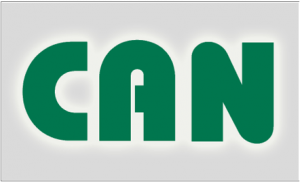What CAN you do?
When you decide to monitor parameters such as vehicle speed and fuel level, a reliable and proven solution is to install a GPS tracker and a fuel sensor.

If you need access to information such as engine speed, mileage, coolant temperature and other data from the onboard computer – this task becomes very creative. If a vehicle already has all the necessary sensors, then you don’t need to install new ones, right? Almost all modern cars (especially when it comes to personal business class and expensive special machinery) are properly equipped with sensors, information from which is transmitted to the on-board computer.
The question is only how to access this information. The problem remained unsolved for a long time. But there are more and more effective solutions now that solve a problem correctly obtaining such data as: engine speed and temperature, fuel level and consumption, information from tachograph and etc. The solution, which we will talk about in this article, will help to read data from CAN bus of a vehicle.
What is CAN bus?
 CAN (Controller Area Network) is a popular standard of the industrial network, focused on the integration into a single network of various actuators and sensors, widely used in automotive equipment. Almost all modern vehicles nowadays are equipped with so-called digital wiring – CAN bus.
CAN (Controller Area Network) is a popular standard of the industrial network, focused on the integration into a single network of various actuators and sensors, widely used in automotive equipment. Almost all modern vehicles nowadays are equipped with so-called digital wiring – CAN bus.
Where did the task of reading data from CAN bus appear?
The task of reading data from CAN bus appeared as a consequence of the task of optimizing vehicles operation costs.
In accordance with the typical requests of customers, vehicles and machinery are equipped with GPS monitoring and fuel monitoring systems (based on capacitive or ultrasonic fuel level sensors).
But practice has shown that customers are increasingly interested in more economical ways of obtaining data, as well as those that do not require serious interference into design, as well as electric cars.
That’s how appeared such a decision to obtain information from CAN bus. It has a number of advantages after all:
- Save money. Do not need to bear significant costs for acquisition and installation of various sensors and devices.
- Do not break warranty. Detection by the manufacturer of third-party interference in the construction or wiring scheme of the car leads to warranty losing. This is clearly not in the sphere of interests of vehicle owners.
- Access to information from standard installed electronic devices and sensors. A certain set of functions can be implemented in a vehicle, depending on the electronic system. Theoretically, we can access all these functions via CAN-bus. This can be mileage, fuel level, door open / close sensors, temperature overboard and inside, RPM, speed, etc.
What advantages and disadvantages does reading data from CAN bus lead to?
Pluses:
- Ability to work in hard real-time mode.
- Easy to implement and lower costs of use.
- High stability to interference.
- Reliable control of transmission and reception errors.
- Wide speed range.
- Widespread technology, availability of a wide range of products from various suppliers.
Disadvantages:
- The maximum network length is counter proportional to the transmission rate.
- Large amount of service data in the package (relative to useful data).
- Lack of a single generally accepted standard for a high-level protocol.
The network standard provides ample opportunities for almost error-free transfer of data between nodes, leaving to a developer an opportunity to put into this standard everything that can fit there. CAN bus is similar to a simple electrical wire. You can put any information flow that can withstand the bandwidth of the bus. There are examples of sound and image transmission on CAN bus. There is a known case of creating an emergency communication system along a road several dozen kilometers long. They needed a high transmission speed in the first case and a short line length in the second case.
Manufacturers, as a rule, do not advertise how they apply useful bytes in the package. Therefore, FMS device can not always decrypt data that CAN bus gives away. In addition, not all vehicle brands have CAN bus. And not even all vehicles of the same brand and model can give the same information.
There is a solution that is used to extract data from CAN bus. It is a contactless data reader CAN Crocodile.
 Advantages of CAN Crocodile technology:
Advantages of CAN Crocodile technology:
- CAN Crocodile allows you to obtain data about vehicle operation from CAN bus without interfering with the integrity of bus itself.
- Reading of data occurs without mechanical and electrical contact with wires.
- CAN Crocodile is used for connecting CAN bus to GPS / GLONASS monitoring systems, which receive information on engine operating modes, status of sensors, malfunctions, etc.
- CAN Crocodile does not break CAN wire insulation and “listens” to the bus exchange using a special wireless receiver.
Using of CAN Crocodile is absolutely safe for a vehicle, unnoticed by an on-board computer, diagnostic scanner and other electronic systems. Especially relevant is to use CAN Crocodile for warranty vehicles in which the connection of any electronic devices to CAN bus often serves as an excuse for cancelling the warranty.
FMS and telematics messages contain important operation parameters of a vehicle: instant and trip fuel consumption, total fuel consumption, RPM, fuel level in a tank, engine operation hours, engine temperature, oil level, oil pressure and much more. It can be more than 100 parameters in total. CAN Crocodile extracts all available information through J1939 protocol.
If we speak about fuel monitoring, the fact is that the main purpose of standard fuel level sensors is to give an estimate with the degree of accuracy that seems to be correct for the vehicle manufacturer. This accuracy can not be shuttered with the accuracy of special sensors.
We recommend not fully rely on the readings of standard fuel level sensors, but consider each situation individually. As a rule, a suitable solution can only be found together with technical specialists. Different manufacturers have different accuracy of indications. Each customer also has different tasks. It makes sense to select a proper solution only for a specific task. Someone is quite fit to receive data from CAN bus, since it is several times cheaper and does not require any changes.

